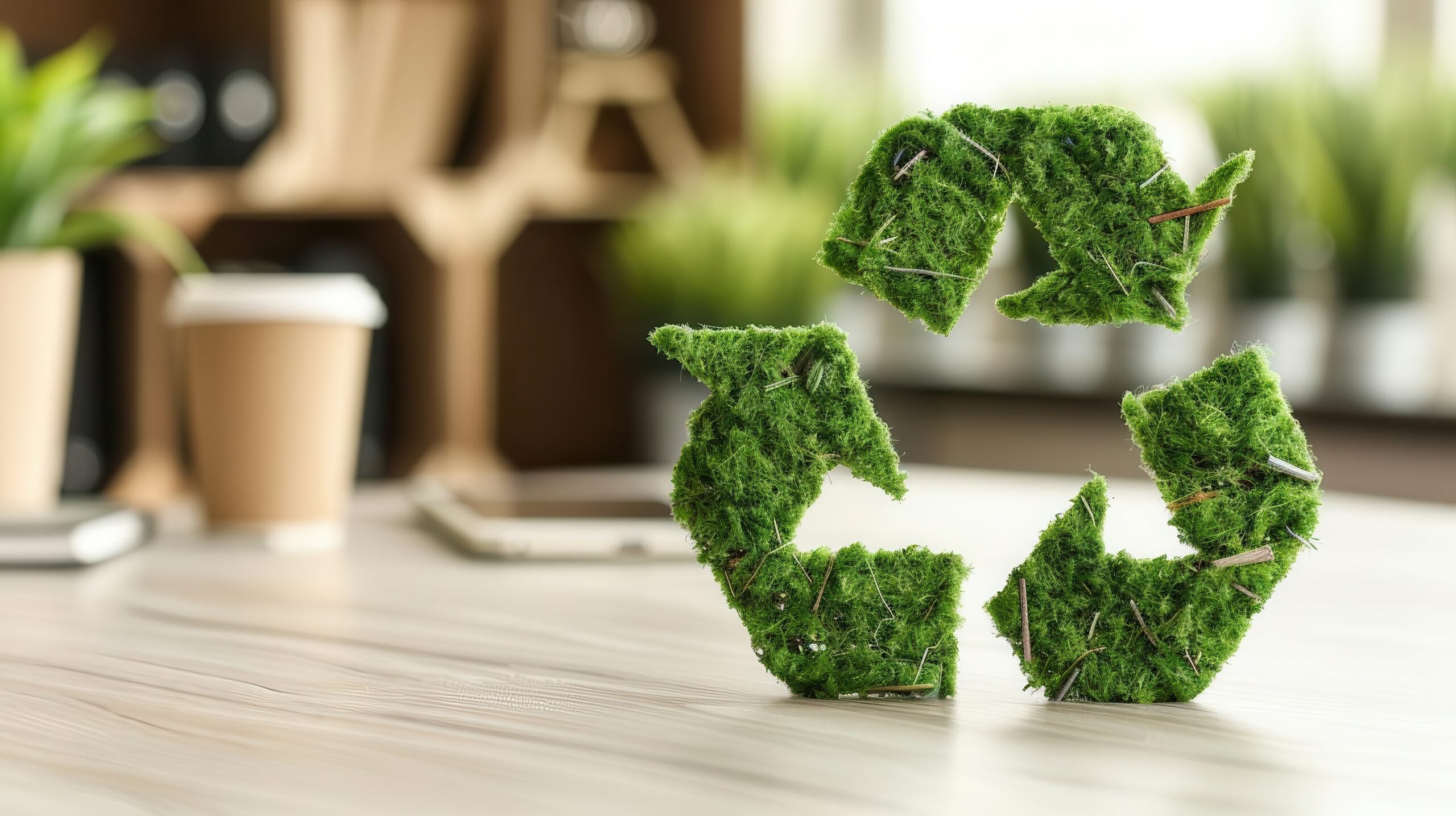
Need a reason to go green? There’s a long list of reasons your business can benefit from being more environmentally friendly. Not only can you save money by reducing your energy consumption and waste, but learning how to implement sustainable practices can also improve your reputation, brand loyalty and sales.
According to one survey, the majority of consumers would consider paying more for environmentally-friendly products. On top of that, customers now expect businesses to report on their sustainability practices.
But how do you make a lasting commitment to sustainability? How do you get your employees to make environmentally-minded choices for the long term? We recommend taking these steps to combine your values with policy, accountability and action.
Six steps to implement sustainable practices
Becoming a more sustainable business means committing to environmental goals. Here, we walk you through how you’ll identify problem areas in your business and move your entire organization down a greener path.
1. Conduct a sustainability audit
Find out where you have the most room for improvement by starting with a sustainability audit. This process lets you compare your company’s current practices to best practices for sustainability.
To conduct the audit, you might hire an external auditor who knows your industry, although this could cost anywhere from $50 to $100 per hour or several thousand a day. For smaller businesses, you might use an audit template or guide — like this one from AuditBoard — that’s suited to your products or services. Here are some of the things to look for:
- Are we in compliance with legislation?
- Is pollution a byproduct of our operations?
- Can we reduce our waste?
- Are we using environmentally-friendly materials?
- Do our current policies reflect our sustainability values?
- Can we reduce waste by creating more infrastructure for remote work?
- Does our supply chain reflect our values?
- Are we effectively tracking and reporting our impact?
- How well do we communicate our policies and train employees?
2. Follow the “Waste Hierarchy”
The Waste Hierarchy is a concept developed by the Environmental Protection Agency (EPA). Their hierarchy helps you prioritize choices that do the least harm to the environment, with respect to each of the materials you use. Here’s what the EPA recommends, in order of priority:
- Waste prevention: The most important goal is to prevent waste production. You can do this by using less packaging, choosing the least toxic materials, or opting for repurposed materials where possible.
- Recycling/composting: If you can’t prevent waste, sort and process your recyclable and compostable products so they can be reused and repurposed. Choose materials that can be reused and Incentivize customers to return or reuse packaging materials, too.
- Energy recovery: Where waste is inevitable, reduce landfill mass by converting non-recyclable materials into energy such as heat, electricity or fuel.
- Treatment and disposal: Finally, before disposing of materials, take steps to break them down and/or reduce toxicity. This might include steps like shredding or chemical treatment.
3. Develop a Sustainability Plan
Now that you’ve identified your strengths, weaknesses and priorities, you can distill your policies into a Sustainability Plan. A complete plan will outline your full sustainability program for all stakeholders. It should include:
- Statement of your company’s commitment
- Specific long-and-short term green goals and milestones
- Description of training and education measures
- Assignment of responsibilities
- Explanation of how sustainability should impact decision making
- Outline of your metrics, tracking and evaluation process
- Resources and worksheets
4. Create employee buy-in
Implementing green practices may require employees to learn new habits. As a leader in your company, you can set an example for employees, whether it’s by sorting your own food waste properly, switching from paper to digital communication or choosing new suppliers. Here’s how you can bring all of your employees in:
- Trainings: Plan initial and ongoing training sessions. Clearly demonstrate how to reduce and dispose of materials that are commonly used in your workplace. Communicate to managers that sustainability is essential to your customer relationships and sales.
- Signage: Make sure waste bins are labeled clearly and properly. Post signs reminding employees to switch off lights, turn off water faucets, etc.
- Recognition: Reward participation by acknowledging employee efforts. Encourage friendly competition and input. Consider creating an employee task force or green committee to do things like create training materials, replace plastic utensils in break rooms and gather feedback on what is/isn’t working.
- Tracking: Track and communicate positive outcomes to both employees and customers. Share your efforts and successes on your social platforms.
5. Choose eco-friendly partners
The vendors in your supply chain can reinforce your commitment to the environment or negate it. To solidify your commitment, examine whether or not your suppliers share your sustainability values.To find suppliers that are aligned with your goals, check to see if they have public Sustainability Reports or have any sustainable business certifications.
6. Let your customers know
Build sustainability into the DNA of your business and let your customers know what you’re doing. Here are a few ways to share your values with customers and create internal and external accountability:
- Get certified: Check with the U.S. Chamber of Commerce to see which sustainable business certification is best for your industry.
- Sustainability statement: Write a public declaration of your company’s commitment to sustainable practices and ongoing improvement. Having a statement helps customers understand who you are and can help you qualify for a green business certification.
- Green mission statement: Clarify your sustainability values in an environmentally-oriented mission statement that supplements your core mission.
In other words, don’t make your sustainability efforts an afterthought or a secret. Any and all of the above tools can be used to reinforce your commitment to sustainability, and to market your business.
1308 Views












